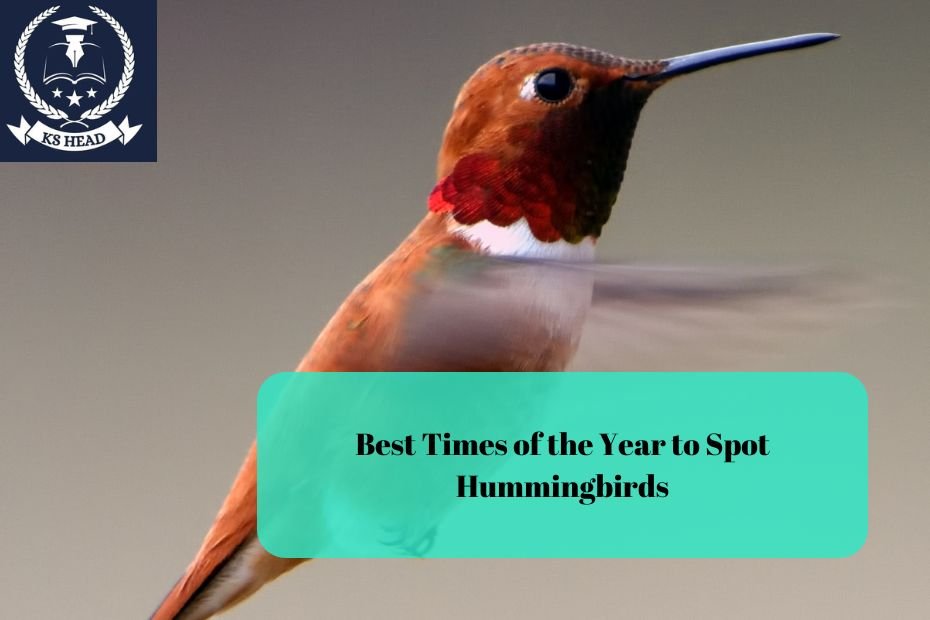Hummingbirds are one of nature’s most enchanting creatures, known for their vibrant colors and incredible flying abilities. Observing these tiny birds can be a delightful experience, especially if you know the best times of the year to spot them. In this article, we’ll explore when and where you can find hummingbirds throughout the year, considering their migration patterns, breeding habits, and seasonal behaviors.
Understanding Hummingbird Migration
Hummingbirds primarily migrate in response to seasonal changes, driven by food availability and weather conditions. The most common species in North America, the Ruby-throated Hummingbird, migrates between breeding grounds in the U.S. and wintering grounds in Central America. Understanding their migration patterns is key to spotting them.
Spring Migration
Timing:
The spring migration typically begins in early March and lasts until late April.
Best Times to Spot:
- March to April: As temperatures warm, Ruby-throated Hummingbirds return to the southern United States first. They begin arriving in Texas and other southern states in mid-March and can be spotted in the eastern U.S. by April.
Where to Spot:
- Southern States: Texas, Louisiana, and Florida are excellent places to observe the first arrivals.
- Eastern U.S.: Once they move northward, they can be seen in gardens, parks, and natural areas from the Gulf Coast to the Great Lakes.
Summer Season
Timing:
May through August is the peak season for hummingbird activity in North America.
Best Times to Spot:
- May to Early July: This is the best time to see hummingbirds as they establish territories and court potential mates.
- Late July to August: As summer progresses, young hummingbirds start to appear.
Where to Spot:
- Gardens and Parks: Hummingbirds will frequent gardens with nectar-rich flowers and feeders during this time.
- Flowering Plants: Areas with abundant blooming plants such as bee balm, trumpet vine, and salvia attract them.
Fall Migration
Timing:
The fall migration occurs from late August to early October.
Best Times to Spot:
- Late August to September: Hummingbirds begin their migration south as food sources diminish and temperatures drop.
- Early October: Depending on the region, many hummingbirds will still be visible as they prepare for their journey.
Where to Spot:
- Feeders: Maintain your hummingbird feeders until at least mid-October to provide nourishment for migrating birds.
- Southern States: As they move south, they can be spotted in gardens and natural areas in southern states, especially along migration routes.
Winter Season
Timing:
Winter is typically the least active time for hummingbird sightings in colder regions, but some species do remain in milder climates.
Best Times to Spot:
- Year-Round Residents: In the southern U.S. (California, Texas, and Florida), some hummingbirds, such as Anna’s Hummingbird and Rufous Hummingbird, can be spotted year-round.
Where to Spot:
- Southern Gardens: Keep feeders up year-round in these regions to attract overwintering hummingbirds.
- Coastal Areas: Coastal regions are also good spots during winter months.
Factors Influencing Hummingbird Activity
Climate and Weather Conditions
Hummingbirds are sensitive to temperature and weather. Warm, sunny days are optimal for their feeding and activity, while rain or cold fronts can affect their behavior. Observing local weather patterns can help you determine the best times for birdwatching.
Planting and Feeding Strategies
To maximize your chances of spotting hummingbirds, consider these tips:
- Early Preparation: Put out hummingbird feeders in early spring, around mid-March, to attract the first migrating birds.
- Nectar Sources: Plant native flowers that bloom at different times to provide continuous nectar sources throughout the spring and summer.
- Maintenance: Clean and refill feeders regularly to keep the nectar fresh and attract more birds.
Watching for Territorial Behavior
Male hummingbirds are particularly territorial during the breeding season. Observing their aggressive displays can indicate the presence of these birds. Look for males defending their feeding areas or engaging in aerial displays to attract females.
Conclusion
Hummingbirds are most active and visible during their migration periods in spring and fall, while summer offers the best opportunities to observe them establishing territories and raising young. By understanding their seasonal patterns and maintaining a hummingbird-friendly environment, you can enjoy the beauty of these remarkable birds in your garden.
FAQs
1. When do hummingbirds migrate?
Hummingbirds typically migrate in the spring, from early March to late April, and again in the fall, from late August to early October.
2. How can I attract hummingbirds to my garden?
Plant nectar-rich flowers, maintain hummingbird feeders with a sugar-water solution, and create a safe habitat with cover and water sources.
3. What types of flowers are best for attracting hummingbirds?
Brightly colored flowers, especially in shades of red, orange, and pink, such as bee balm, trumpet vine, and salvia, are particularly attractive to hummingbirds.
4. Can I see hummingbirds in winter?
In some southern regions, certain species of hummingbirds can be spotted year-round. Keep feeders up to attract them during winter.
5. How can I spot male hummingbirds during breeding season?
Males are typically more aggressive and territorial during breeding season. Look for them defending their feeding areas and performing aerial displays.

